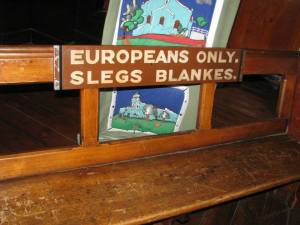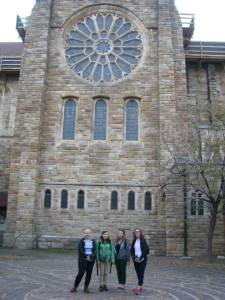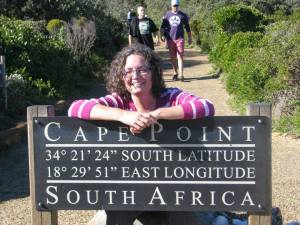
I arrived safely home last night, with two disturbing incidents that made me think about how people handle the “other”. The first one took place after I had picked up my luggage in the Minneapolis airport. As I wheeled mine behind a non-white family, I overheard the customs officer making belittling remarks to them about not having their luggage. He made them feel stupid. As I stepped forward to hand my declaration form to him, I must have looked like I was going to say something but before I could, he shot out his routine question: “Do you have all your luggage?”
When I confirmed that I did, he made a snide remark about how easy that was, and he was sure that I had heard the instructions clearly so why did everyone else not? He dehumanized this family with his racist attitude. I collected my papers and moved on, ashamed for not saying anything, but aware that he had the power to withhold my papers and make me miss my connecting flight. I replayed this incident a number of times with a variety of endings but the reality is that I could not speak up because of the power he wielded. Ah truth! You are painful at times.
When we finally boarded the last plane of the day that would eventually take me home, we discovered that we were stuck on the plane, waiting for an engineer to arrive with parts for a plane which needed fixing in Winnipeg. The “nice” Canadian passengers got upset, one couple yelling obscenities. I was shocked as I collided into the sad, pathetic truth that Canadians can be not so nice. The pilot handed it very well but I was ashamed by the outburst by these passengers. More than anyone on that plane, I suspect, I wanted to home and in my own bed. I might have been equally as capable of creating a scene–though mine would have been to burst into tears. I was tired but patient.
The last few days in Johannesburg were marred by our room being broken into and my camera with all my photos, plus my computer with my journal assignment, stolen. We were up late on the Saturday night filling out police reports. A detective came by the next morning and interviewed us again. Finally a fingerprint specialist came by. My roommates and another friend also had electronics stolen. We laughed about it later, saying now we were old school, having to rely on others with phones and computers to communicate.
I have lots to ponder in the coming weeks and the robbery sure put a damper on the last days in South Africa. The truth is that I am a privileged white woman who could afford to bring into poverty a fancy camera and a netbook that tempted someone to commit a crime. I have been all over the emotional gamut with the event: sad, angry, blaming, fearful, and frustrated. I am still frustrated with losing my university assignment and many of my photos that I wanted to use for a new line of cards. However, I do not want the experience to taint the first leg of this amazing journey. This picture of Madiba doing what I have dubbed his joy dance reminded me that the perpetrators cannot win. I have the power to control my outcome and I can make the memory of my trip a positive event and not dwell on this one blip of the two-week journey.
I struggled to forgive the thieves for ruining our last weekend in South Africa. I cannot let it taint the entire trip though. I need to move to a space of reconciliation after these two weeks of witnessing others forgive for much more horrific atrocities. I will need to spend some time unpacking this experience as a whole.
Please join me as I will be writing missed passages and events here in the weeks ahead.
Peace,
Suzanne














